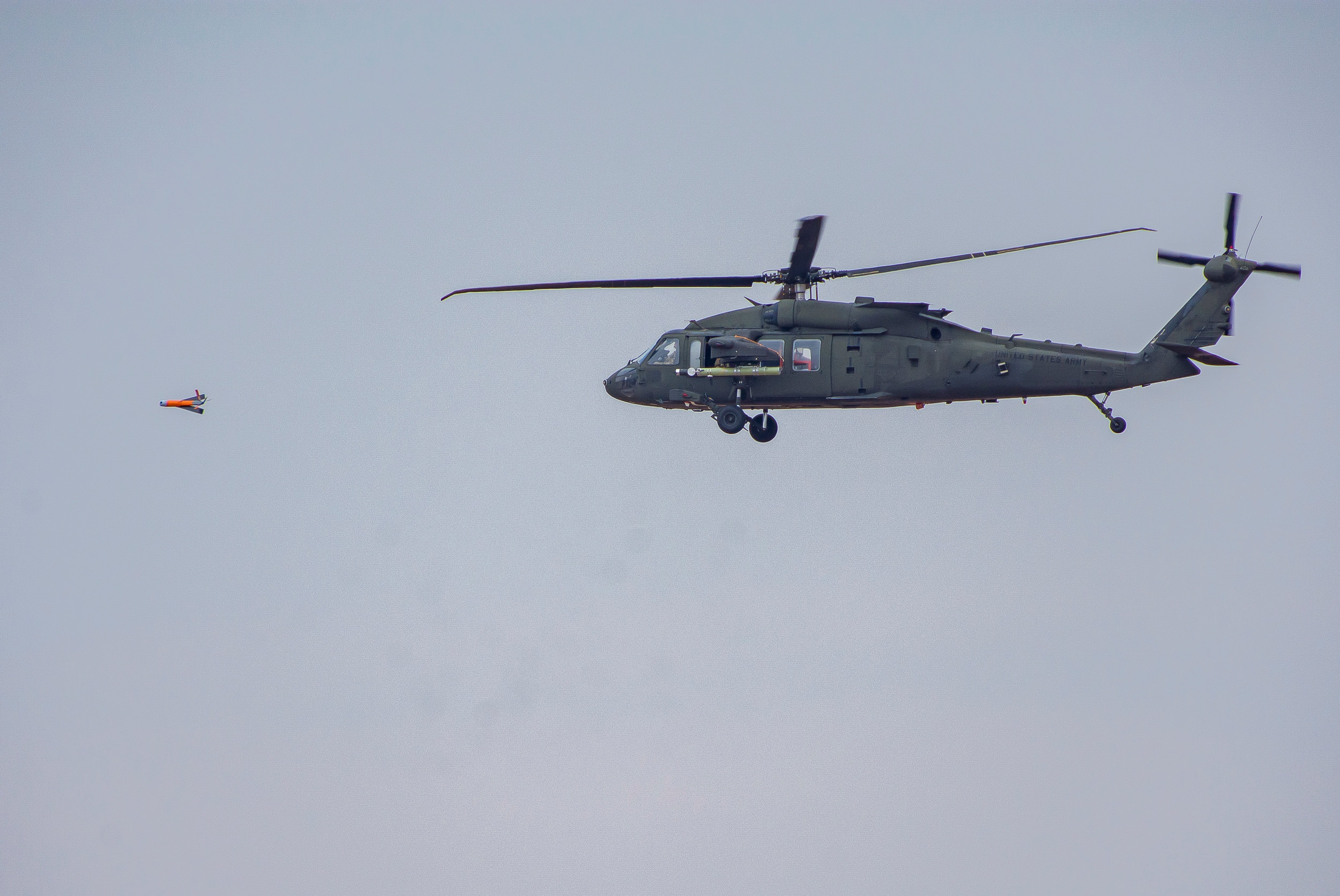WASHINGTON — The U.S. Army picked two of the world’s largest defense contractors to develop spying and jamming payloads for drones that can be catapulted from a moving vehicle or larger aircraft.
The service’s Program Executive Office for Intelligence, Electronic Warfare and Sensors, or PEO IEW&S, on Nov. 29 named Lockheed Martin and Northrop Grumman as the winners of other transaction authority deals for a launched-effects program “within the infrared and electronic warfare realms.”
Further details about the planned payloads were not provided.
The initial awards are worth hundreds of thousands of dollars and are aimed at maturing existing technologies, according to the office, which helps develop everything from biometric tools to surveillance aerostats. Tens of millions of dollars are up for grabs in the long run.
The Army is exploring launched effects — previously divided into camps, ground-launched and air-launched — to extend its reach without putting additional lives on the line.
After spending decades in the Middle East waging counterinsurgency campaigns, the U.S. is now focusing on potential large-scale conflicts with Russia and China. The two powers have constructed anti-access and area-denial infrastructure to keep at bay U.S. weapons or forces that could overwhelm.
Launched effects, hurtling outward from tanks or helicopters or something else, are meant to complement existing equipment soldiers rely on to scout, target, jam and kill. The technology is considered a critical part of the Army’s Future Attack Reconnaissance Aircraft and Future Long-Range Assault Aircraft endeavors.
Launched effects have been successfully tested by the Army in the past, including at Project Convergence, its emerging-tech crucible. In January, General Atomics Aeronautical Systems announced its Eaglet launched-effect flew for the first time, dropping off an Army-owned Gray Eagle Extended Range Unmanned Aircraft System during a demonstration in Utah.
Lockheed is the largest contractor in the world when ranked by defense-related revenue, according to Defense News Top 100 analysis. The Maryland-based company earned $63 billion in 2022. Northrop is the third largest contractor by the same measure, reaping $32 billion in same period.
Colin Demarest was a reporter at C4ISRNET, where he covered military networks, cyber and IT. Colin had previously covered the Department of Energy and its National Nuclear Security Administration — namely Cold War cleanup and nuclear weapons development — for a daily newspaper in South Carolina. Colin is also an award-winning photographer.





